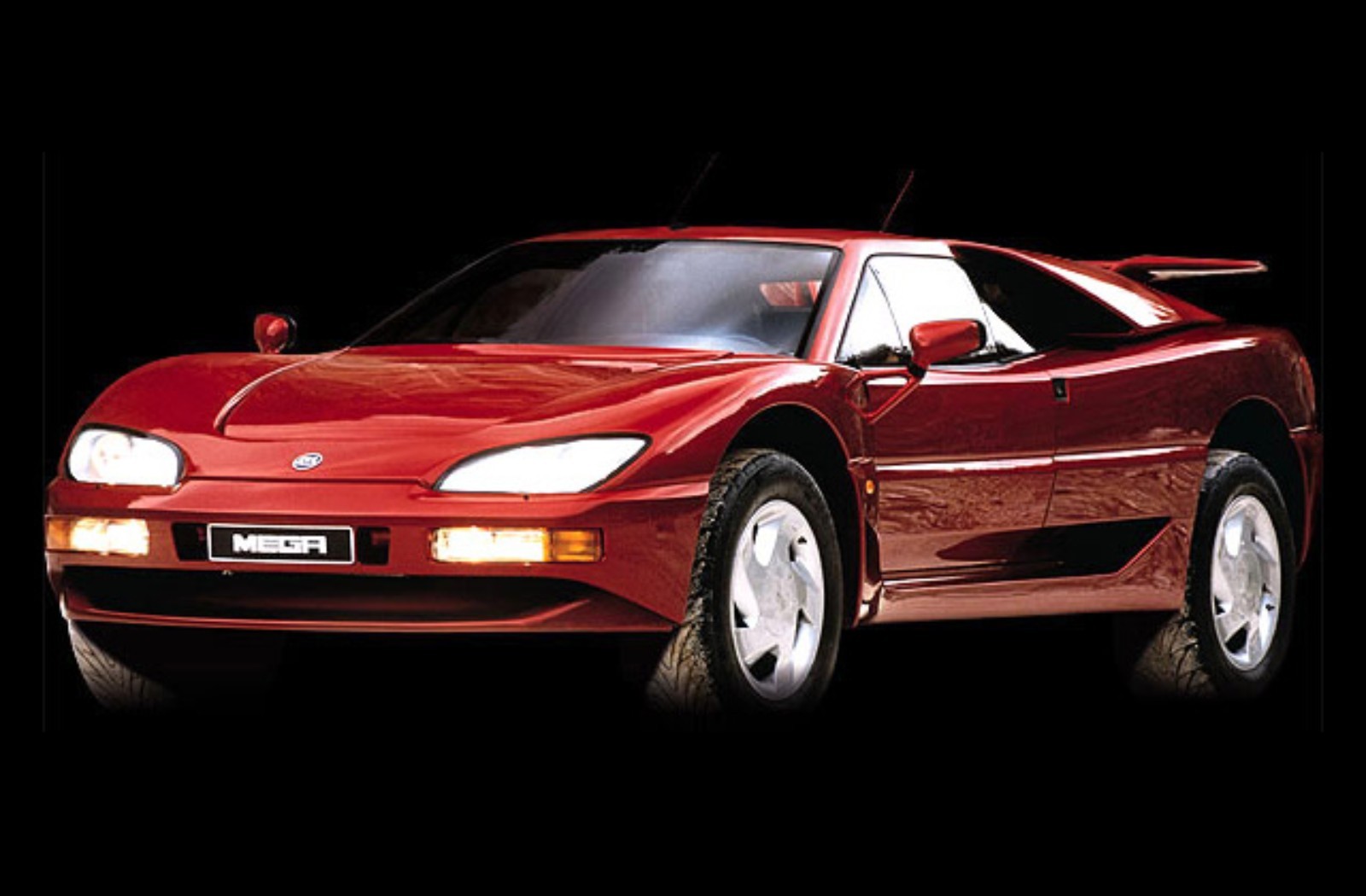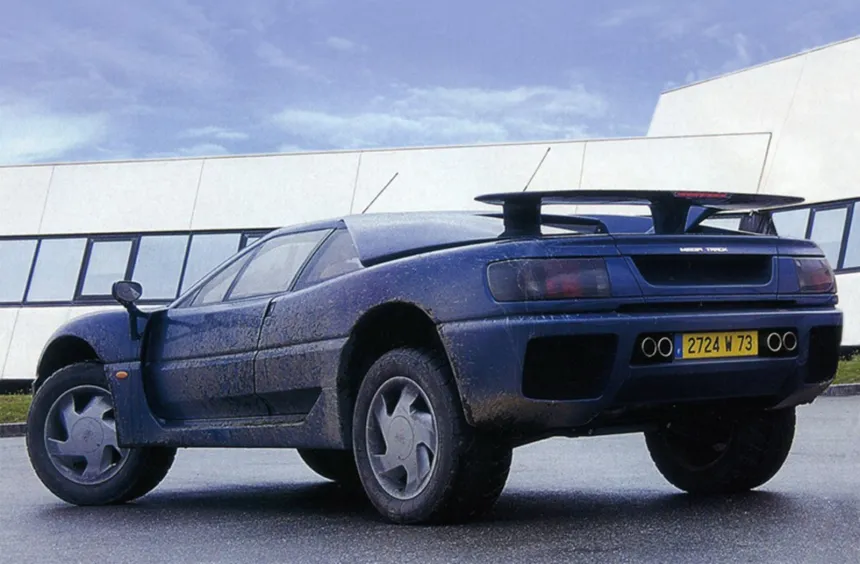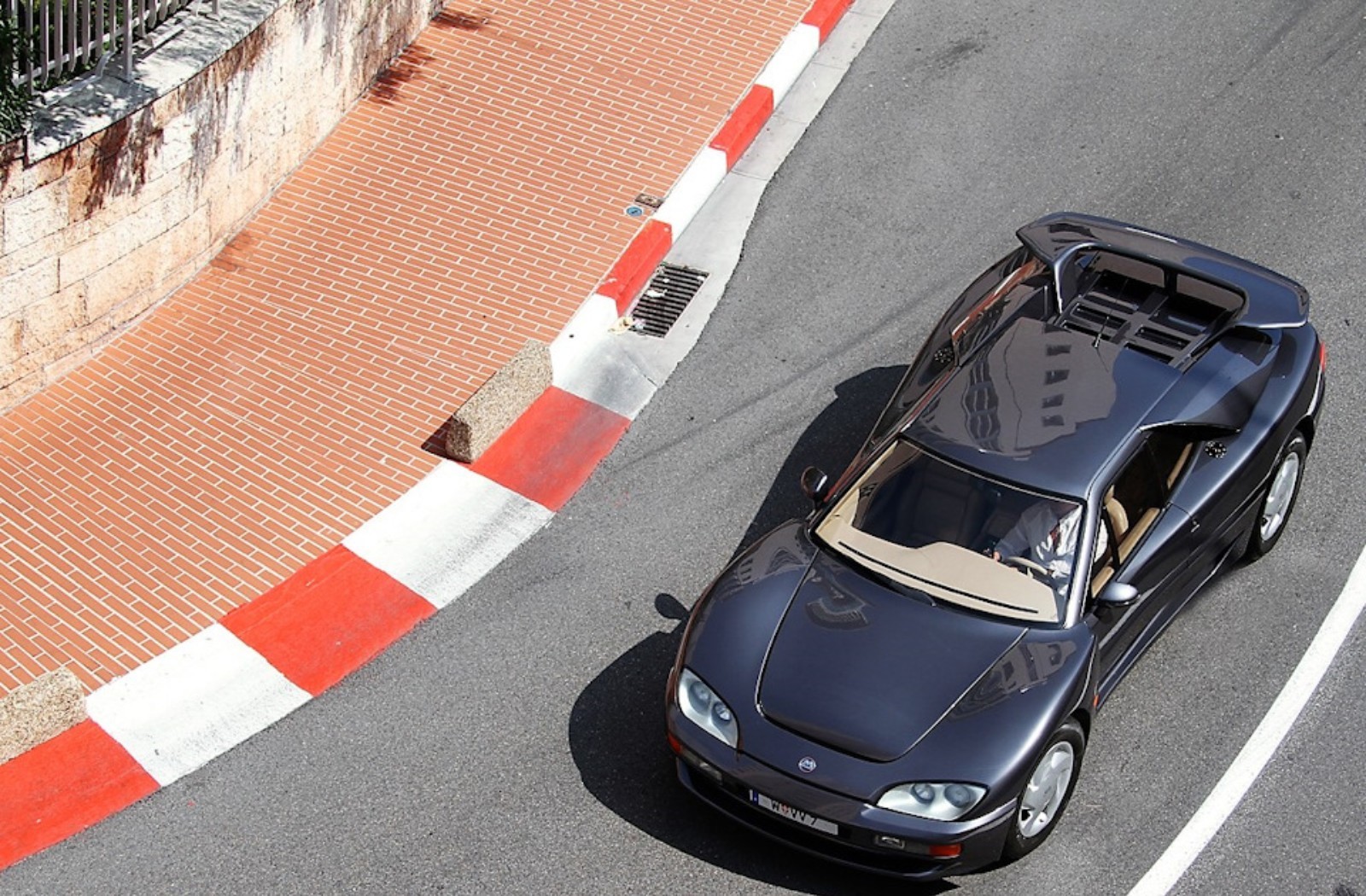
The Mega Track, a unique creation by the French company Aixam-Mega, emerged as an ambitious project in the early 1990s. The company, primarily known for producing microcars, ventured into the realm of high-performance vehicles with a bold vision: to design a car that could seamlessly blend the luxury and performance of a supercar with the ruggedness of an off-roader.
The development of the Mega Track began in the late 1980s, driven by the vision of an entirely new type of vehicle that could outperform traditional sports cars and navigate difficult terrains. Aixam-Mega enlisted the help of engineers, designers, and specialists in both automotive performance and off-road capabilities to bring this ambitious idea to life. The design process took several years, and the project involved considerable investment in both time and resources.
One of the key figures behind the creation of the Mega Track was the company’s founder, Jean-Michel Welter, who had a deep passion for innovative vehicle designs. Welter’s vision was not just to create a high-speed luxury car but one that could tackle off-road challenges with ease. The concept was radical at the time, as few other manufacturers had explored the idea of merging off-road features with high-performance sports cars.
The Mega Track was unveiled in 1992, and its appearance was as unconventional as its design. With its towering profile, massive tires, and an aggressive stance, it quickly became a standout among other supercars of the era.
Despite its groundbreaking design and engineering, the Mega Track faced significant challenges in gaining widespread appeal. The car’s high price tag, coupled with its niche market appeal, meant that it was never mass-produced. In total, only a handful of units were made, each assembled by hand, making it an extremely rare vehicle. The exclusivity of the Mega Track only added to its mystique, and it became a collector’s dream.
While production was limited, the Mega Track left an indelible mark on automotive history. It was an example of how bold thinking and fearless engineering could produce a truly unique car. Though it never achieved commercial success, the Mega Track remains a symbol of innovation, representing a daring attempt to push the boundaries of what a car could be.
The legacy of the Mega Track continues to intrigue car enthusiasts, with its combination of luxury, off-road capabilities, and striking design serving as a reminder that sometimes the most extraordinary vehicles come from the most unexpected sources.
Read too: From Dream to Legend: The Story of Lotec

Mega Track Specifications
1. Engine and Power:
Engine Type: 6.0-liter V12 (from Mercedes-Benz)
Power: 394 hp
Top Speed: 250 km/h
0-100 km/h: 4.2 seconds
2. Drive System:
Drive Type: All-wheel drive (4WD)
Drive System: Adjustable torque distribution depending on road conditions
3. Body and Suspension:
Body Material: Steel and composite materials
Body Type: 2-door sedan
Suspension: Adjustable hydraulic suspension for varying ground clearance from 22 to 33 cm
Dimensions:
Length: 4.7 m
Width: 2.1 m
Height: 2.3 m
Wheelbase: 2.8 m
4. Wheels and Tires:
Tires: Large off-road tires for enhanced terrain capability
Wheel Size: 17 inches
5. Interior and Equipment:
Seats: Spacious leather seats for 2-3 passengers
Features: Upgraded multimedia system, air conditioning, sunroof
6. Transmission and Control System:
Transmission Type: 4-speed automatic transmission
Steering: Hydraulic steering for easier handling on any surface
7. Weight:
Vehicle Weight: 2.5 tons
8. Safety Features:
Full set of airbags
Anti-lock Braking System (ABS)
Stability control system
Read too: New Lamborghini Bravo specs are still unknown

Intresting facts about Mega Truck:
1. Mega Track was ahead of its time as the “first off-road supercar”
Mega Track was essentially the predecessor of modern luxury off-road vehicles like the Lamborghini Urus or Ferrari Purosangue. In the 1990s, the idea of such a car seemed far-fetched, but today, it’s a thriving market segment.
2. Mercedes-Benz V12 engine — a prototype for future records
The engine used in the Mega Track served as a foundation for future developments in the Mercedes-Benz lineup, including models that set speed records on the tracks.
3. Mega Track was tested in arctic conditions
To showcase its versatility, one of the Mega Track prototypes was tested in the harsh conditions of Northern Europe. The car impressed with its ability to operate in extremely low temperatures.
4. The most expensive car in Aixam-Mega’s lineup
Mega Track was priced at over $300,000 in 1992. In comparison, the most expensive Aixam model at the time was 30 times cheaper.
5. One prototype was lost during testing
During early testing, one of the Mega Track prototypes was destroyed in an accident due to a suspension failure. However, this incident led to significant improvements in the car’s design.
Read too: Loss of DNA Cupra Formentor and Leon in restyle 2024

When the Mega Track debuted in 1992, the idea of combining a supercar with off-road capabilities seemed groundbreaking. At the time, the luxury car market was divided into two main segments: sports cars focused on speed and design, and rugged SUVs built for adventure. The Mega Track aimed to unite these two concepts in a single vehicle — a bold and challenging endeavor.
How Did Mega Track Get Ahead of Its Time?
1. Versatility:
Mega Track was a supercar capable of comfortably driving on both highways and rough terrain. This concept proved to be incredibly relevant to today’s market, as luxury SUVs are among the most popular car segments.
2. Innovative Technology:
Its adjustable suspension and ground clearance, which allowed drivers to adapt the car to different road types, were precursors to modern systems like adaptive suspension, now used in vehicles like the Bentley Bentayga, Lamborghini Urus and Rolls-Royce Cullinan.
3. Focus on Comfort and Power:
Today, luxury SUVs combine high performance, premium design, and travel comfort. Mega Track was one of the first to offer this formula.
Mega Track opened the door to a segment that seemed too niche in the 1990s. Now, this segment brings huge profits to automakers:
Lamborghini Urus: One of Lamborghini’s best-selling models, combining sports car aesthetics with the practicality of an SUV.
Ferrari Purosangue: Ferrari’s first SUV, following the Mega Track’s idea of merging versatility with prestige.
Bentley Bentayga: A premium SUV that can also be considered a “spiritual successor” to the Mega Track due to its versatility.
Mega Track launched at an unfavorable time. In the early 1990s, a supercar capable of off-roading seemed more like a curiosity than a practical vehicle. Supercar buyers valued elegance and speed on highways, not the ability to tackle mountains or deserts. Moreover, the car’s high price, limited marketing, and small production numbers made it accessible only to a very niche audience.
At first glance, Mega Track appears to be a failure due to the small number of units sold and the absence of a follow-up model. However, on a deeper level, it became the ideological inspiration for modern luxury SUVs. In concept, Mega Track was ahead of the market by 20–25 years.
Read too: Top 5 most beautiful crossovers

Conclusion: The Legacy of Mega Track
Today, Mega Track holds a unique place in automotive history. It not only demonstrated the possibility of a “hybrid” supercar and off-roader but also showed major manufacturers how to turn this idea into a successful business. The Mega Track was a car of its time, but its concept proved timeless.
Future Classics: 8/10
Brand Recognition: 9/10
Design Modernity: 9/10
CarsCorn Score: 8.7/10